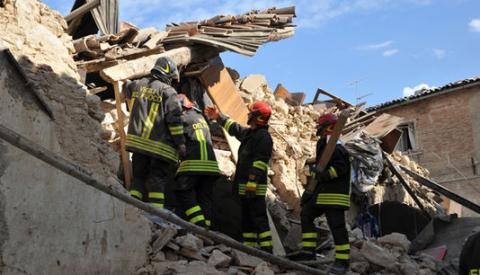CBRN - Chemical, Biological, Radiological, Nuclear Response
Strengthening CBRN-response in Europe by enhancing on-site cooperation between safety and security organisations: an Italian pilot
Rationale
Over the last decades, the International Community has promoted several initiatives aimed at facing the threats posed by the accidental or intentional release of Chemical, Biological, Radiological and Nuclear (CBRN) agents. These initiatives have involved many actors across the globe, and concerned different – although interrelated – domains: the political, legislative, economic, organisational, technical and technological. At the regional and national level, the EU and its Member States have adopted and implemented specific measures and instruments to cope with CBRN threats. They have also supported studies and researches aimed at fostering the definition and employment of new and more effective solutions to increase the prevention, preparedness and response to, as well as recovery from, CBRN events.
“Strengthening CBRN-response in Europe by enhancing on-site cooperation between safety and security organisations: an Italian pilot” – or, in short, “CBRN Integrated Response Italy” – represents one of the above mentioned research initiatives. It was a 2 years ground-breaking research project funded by the DG HOME of the European Commission. It started in May 2013 and has been carried out by a consortium consisting of representatives from both the academia and the end-users: the Scuola Sant’Anna serving as Project coordinator; the University of Rome “Tor Vergata”; and the Italian National Fire-Fighters Corp.
The project is a starter measure as it aims at building and testing an integrated CBRN response capability of first responders and law enforcement agencies in Italy, with a view to transfer the approach to other Member States. This would contribute to develop the capacity of first responders to work with law enforcement agencies in a CBRN (Chemical, Biological, Radiological and Nuclear) incident being it the result of an accidental, natural or intentional action, including acts of terrorism, and to deliver assistance both at national and international level.
At the same time, it is also a complementary measure as it aims to integrate the lessons learnt from the EU CREMEX 2011CBRN exercise, organized by Estonia, with Italian practice.
Objectives
“CBRN Integrated Response Italy” implemented the EU CBRN Action Plan (2009) with regard to Italy (actions H 29, H31, H37, H40, H42 e H57). It aimed at building and testing an integrated CBRN response capability of Italian first responders and law enforcement agencies when dealing with CBRN incidents that are the result of accidental, natural or intentional/malevolent actions – terrorism included. Although principally focused on Italy and its established response system, the Project’s scope and reach were European. This means that the identified solutions to improve effective coordination and integration between both kinds of agencies can be potentially adopted by other EU Member States’ relevant agencies when facing CBRN threats.
In particular, the Project aimed to:
-
Identify similarities and differences between the institutional, legal and technical-operational approach to CBRN events in the EU Countries surveyed as well as to recognise gaps and the best practices;
-
Define common approaches to deal with the critical issues by building on the experience of other EU countries such as Estonia and the Netherlands;
-
Develop common guidelines for the response to CBRN incidents and incoming assistance;
-
Translate the guidelines into the outline of a common training curriculum for both first responders and law enforcement training institutes.
Documents to download:
- Mapping Report
- Proposal for the Integration of the EU Host Nation Support Guidelines (HNSG)
- Common Training Curriculum
For further information please visit here.

